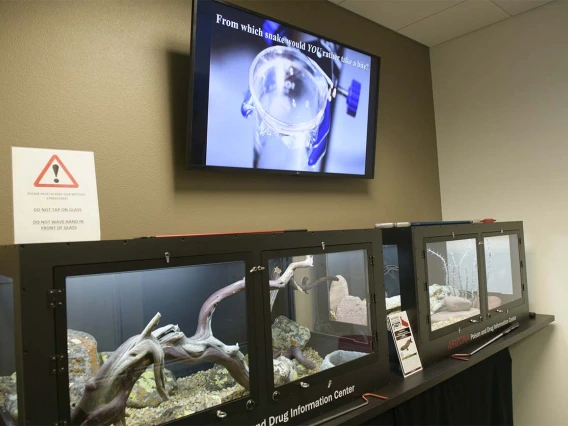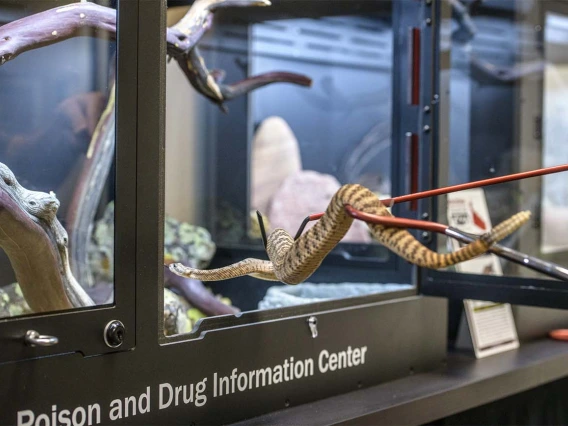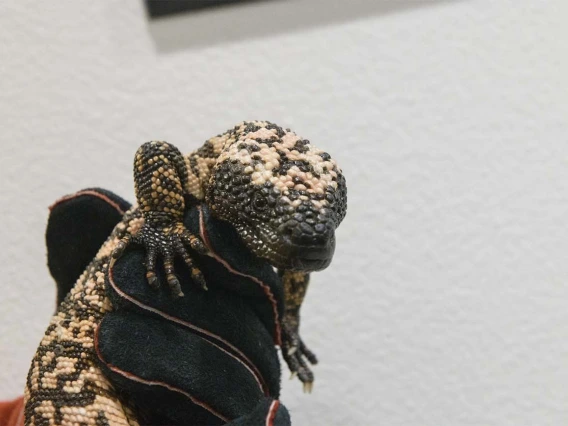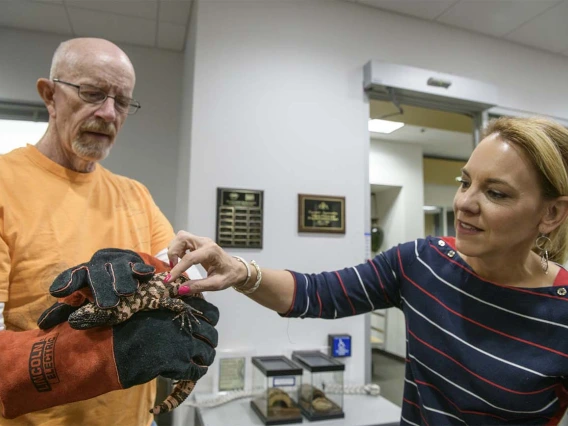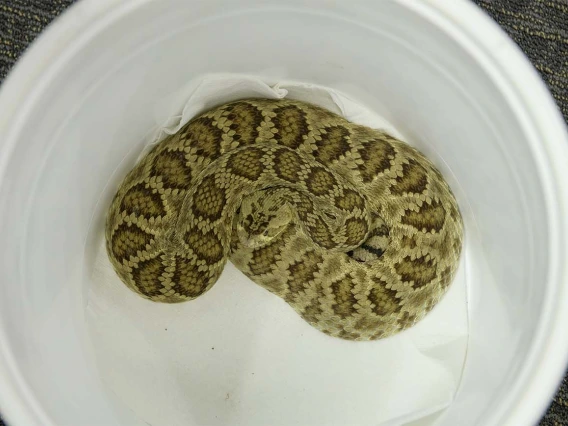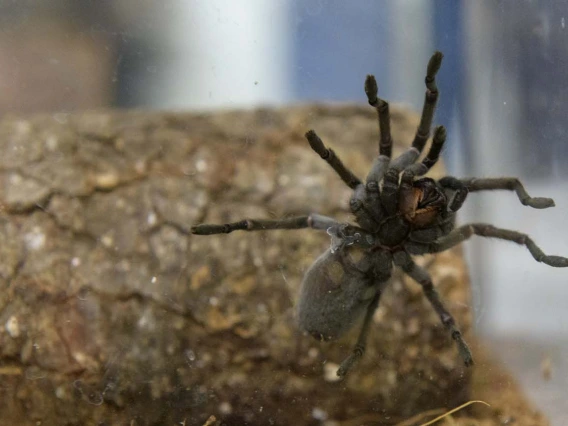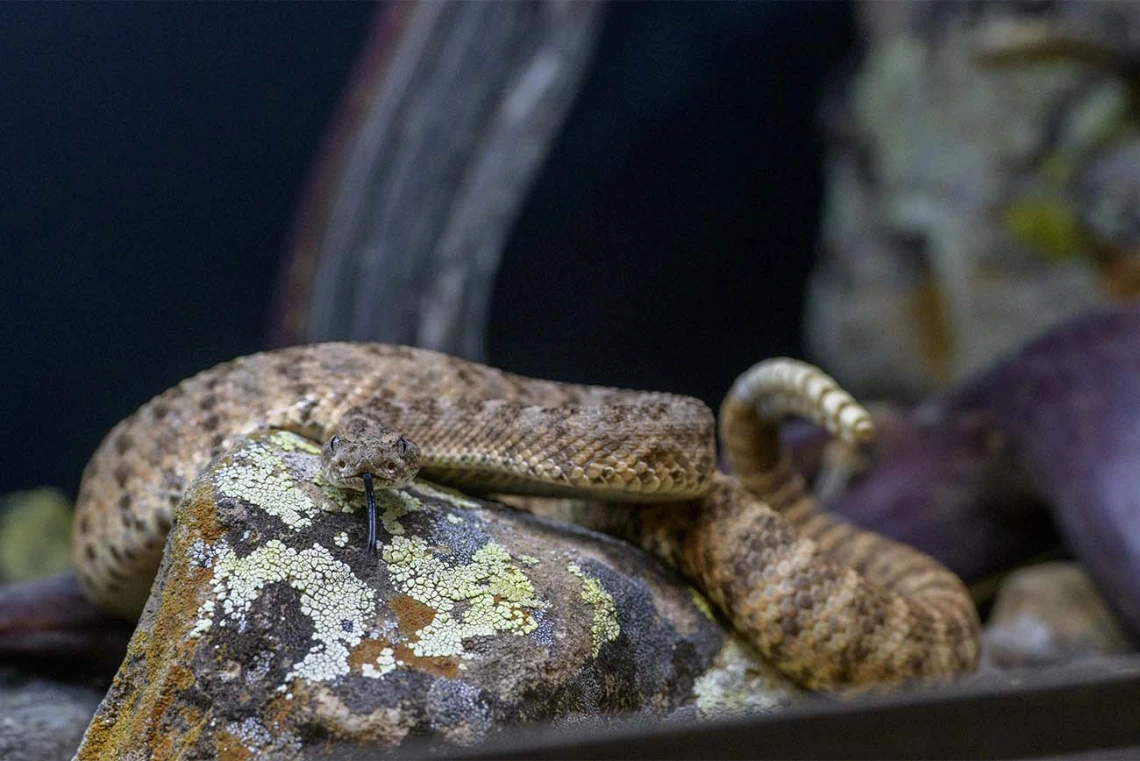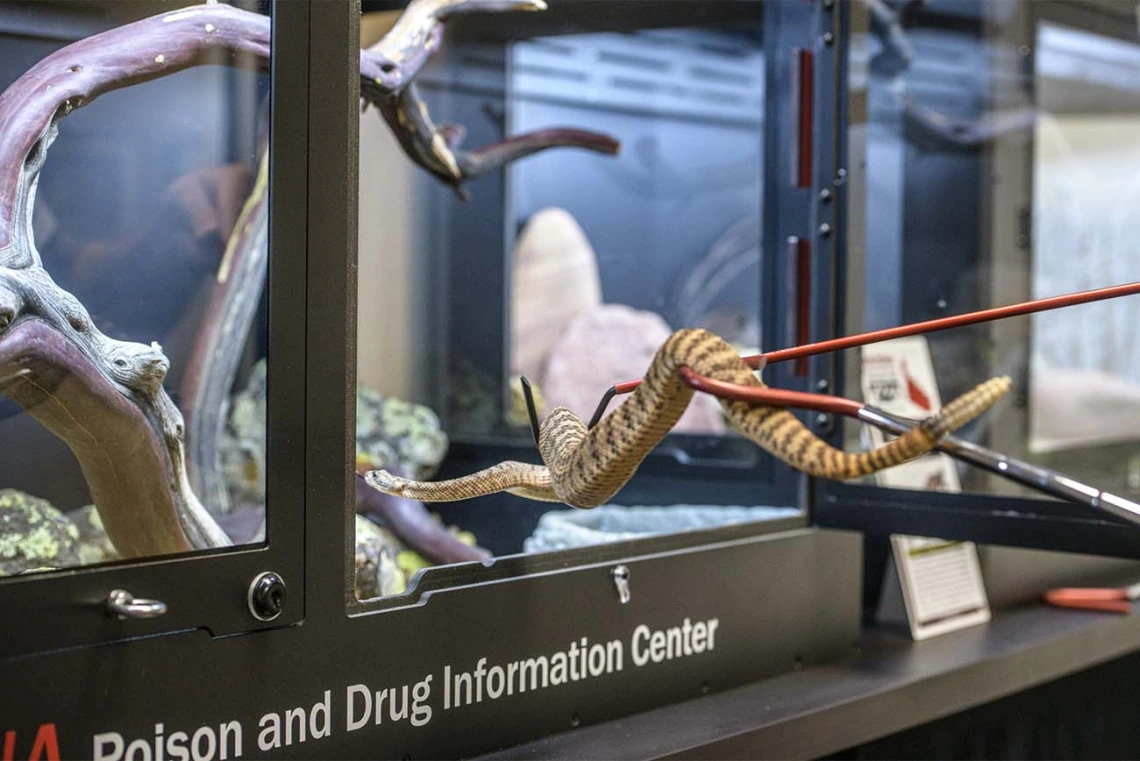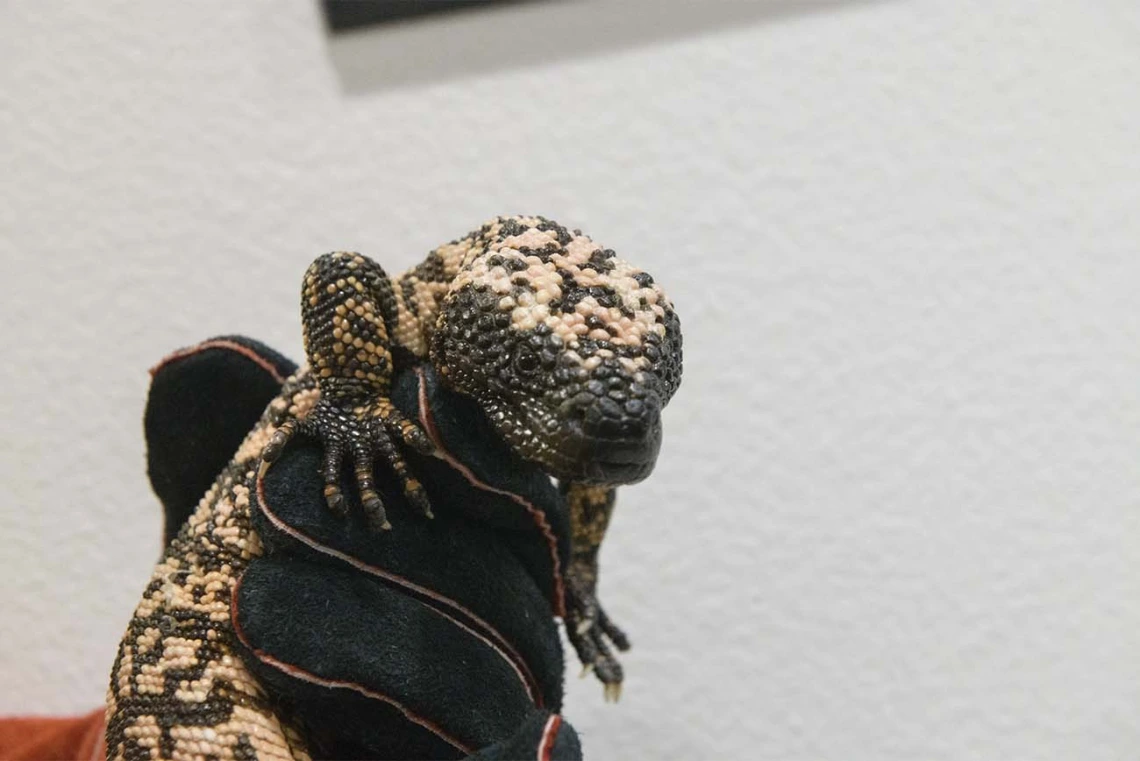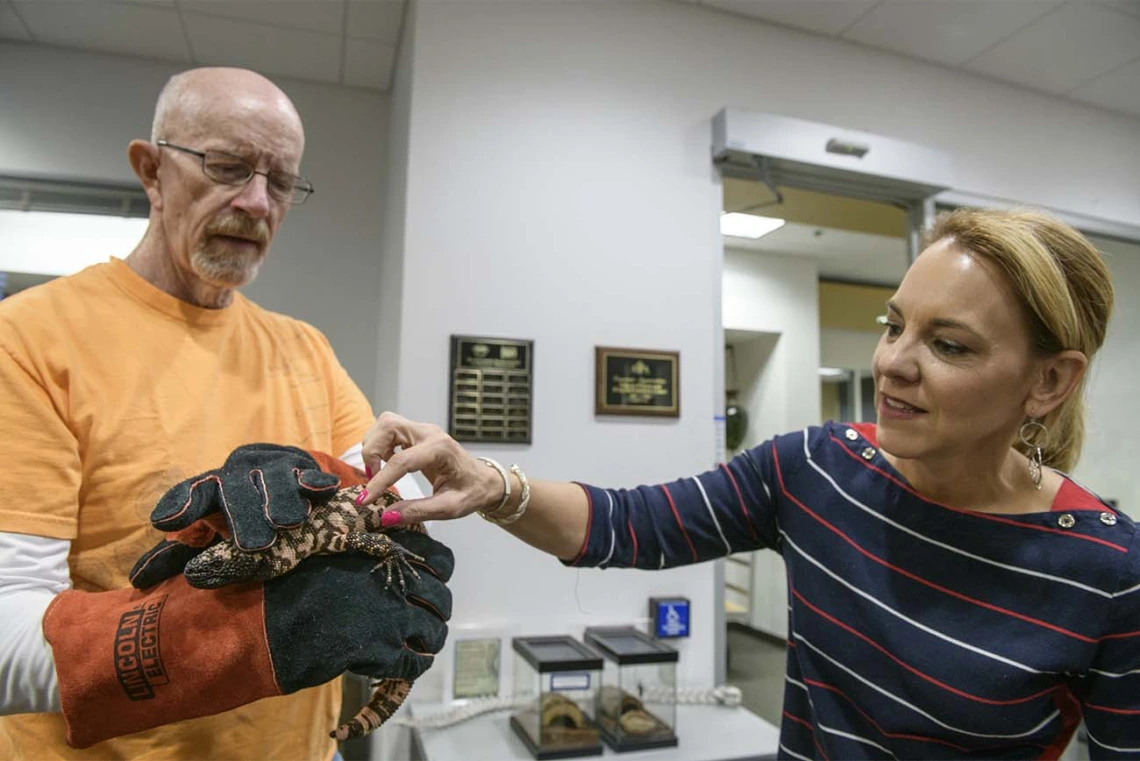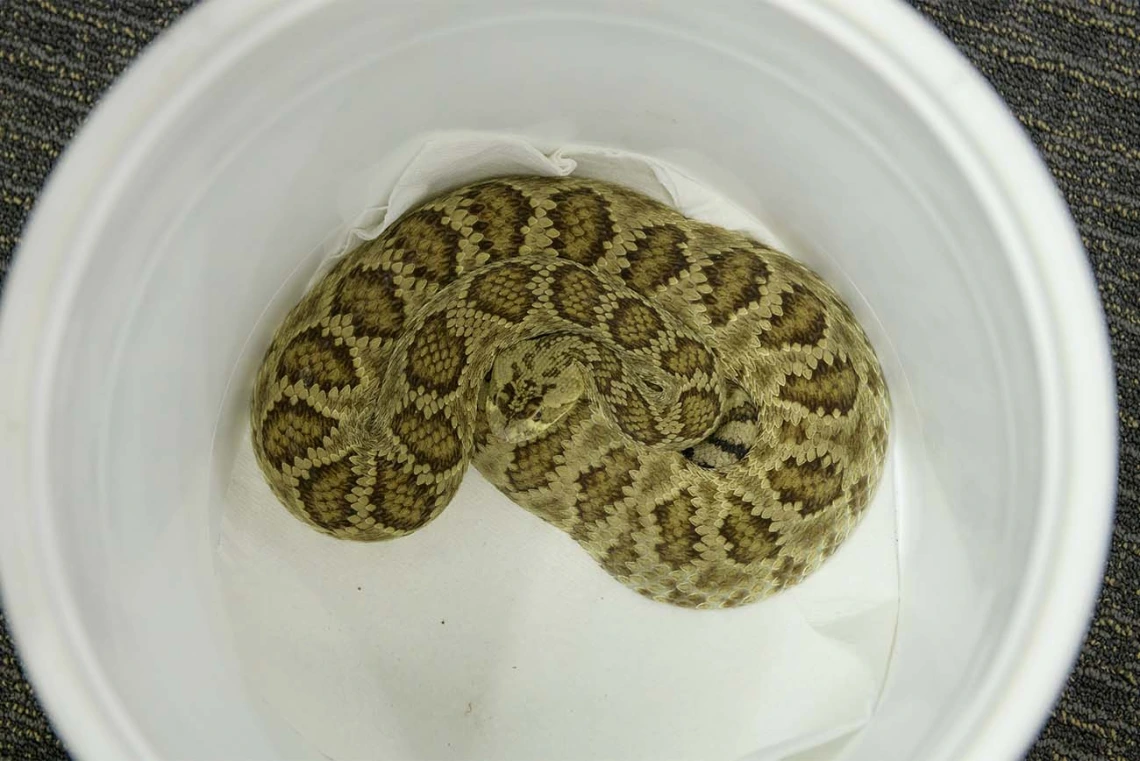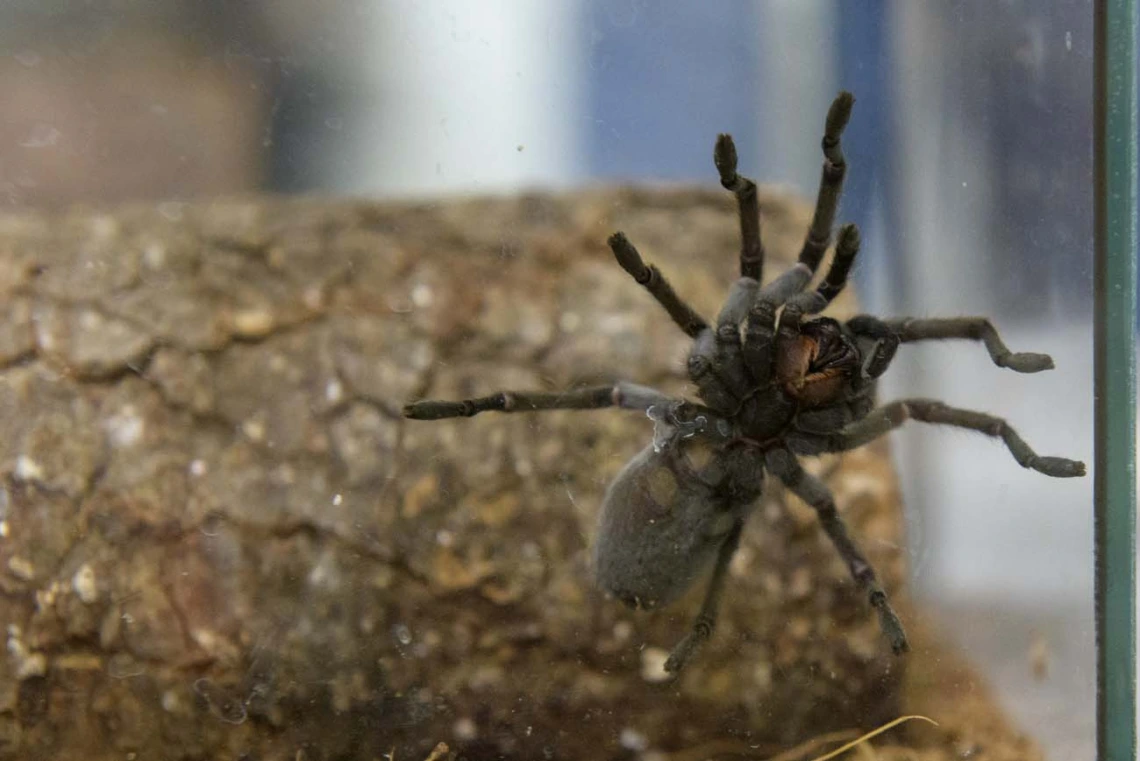Seeing Snakes, Spiders and Scorpions Up Close to Save Someone
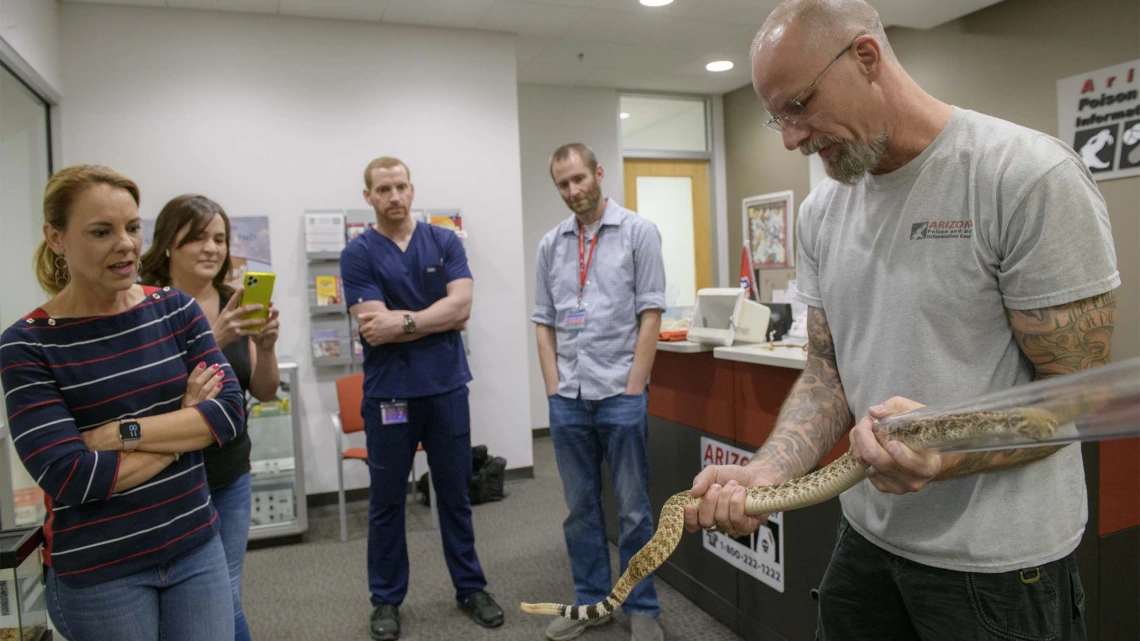
Erika Grasse (front left) keeps her distance as venomous reptile curator Dan Massey, PharmD, BCPS, shows her how to identify a Western Diamondback rattlesnake at the Arizona Poison and Drug Information Center (AzPDIC) located in the College of Pharmacy.
The Arizona Poison and Drug Information Center (AzPDIC) in the UArizona College of Pharmacy is unlike any other poison control center in the country. As part of training future pharmacists and physicians on how to recognize various poisons, the center exposes them to the many venomous creatures native to the state by housing live animals right in the center.
At any one time, the AzPDIC can house several rattlesnakes, Gila monsters, Colorado River toads and spiders – all venomous animals Arizonans may encounter face to face. The live animals help the center’s staff better recognize and give advice to callers concerned about a possible envenomation. This information can be the difference between a trip to the emergency room or home treatment.
While only professionals who are licensed annually by the Arizona Game and Fish Department handle the animals, being around them makes an instant impact.
To learn more about how the AzPDIC uses live venomous animals to save lives in Arizona, click here.



